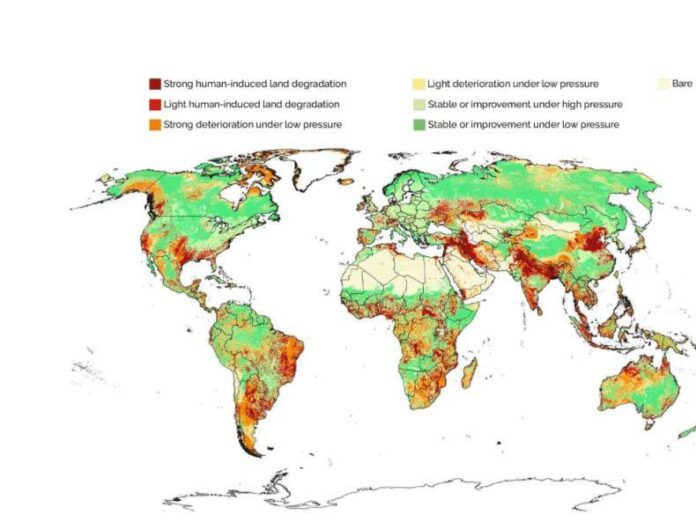Introduction
Permanent cover cropping, a cornerstone of regenerative agriculture, involves planting species like legumes and grasses to keep soil covered year-round, reducing erosion and enhancing biodiversity. Inspired by Bourguignon’s emphasis on living soils and Séguy’s no-till mulch systems, this approach has gained traction globally. In the U.S., cover crop acreage per farm averaged 298 acres in 2015, projected to hit 339 in 2016—more than doubling since 2011—according to CTIC/SARE surveys {1}. By 2022, U.S. cropland with cover crops reached nearly 18 million acres, a 17% increase from 2017 {7}. However, 2025’s economic landscape, marked by declining farm profitability and input cost hikes, complicates adoption. Farmer posts on social media highlight “despair” amid low prices and weather woes [G15], while expert analyses warn of business failures without support [G8]. This article synthesizes factual data, farmer sentiments, and emerging trends to assess satisfaction levels and economic viability.
The Promise of Permanent Cover Crops: Yields and Soil Health Benefits
Long-term data underscores the agronomic wins of permanent cover crops. CTIC/SARE surveys since 2012 show corn yields rising by 3.4 bushels per acre (1.9%) and soybeans by 1.5 bushels (2.8%) with cover crops, with corn gains reaching 8.3 bushels after four-plus years {1}{6}. These improvements stem from enhanced soil health, reduced erosion, and better nutrient cycling, aligning with Bourguignon’s microbial-focused philosophy. In Vermont’s 2024-2025 trials, variety evaluations identified resilient species for northern climates, boosting biomass and farmer optimism {8}.
Expert perspectives reinforce this. A 2025 Farmonaut analysis notes 10-20% yield hikes after 3-5 years in stable regions [G2], crediting Séguy’s direct seeding methods for tropical successes. On social media, positive sentiments emerge from diversified farms, with users praising reduced fertilizer needs amid 68% input cost rises [G15]. Yet, satisfaction hinges on persistence: Minnesota trials in 2024-2025 showed spring-planted mixes yielding over 1,500 lb/ac biomass, but variability demands site-specific tweaks {5}.
Economic Realities: Challenges and Dissatisfaction During Transition
Despite benefits, economic hurdles often lead to dissatisfaction. Practical Farmers of Iowa data reveals corn yields averaging 218-222 bushels/acre with cover crops versus 226 without, with lower returns excluding subsidies {2}. Upfront costs—seeds, equipment, and management—can exceed $50-100/acre, per 2025 interpretations {5}, amplified by global pressures like low commodity prices [G1]. In 2025, American Farm Bureau reports plummeting profitability straining transitions [G1], while social media threads decry “farmer despair” from fertilizer hikes and harvest losses [G15].
Syntheses highlight a “transition gap” of 2-5 years where yields dip, causing 20-30% initial drops in high-risk areas {5}. Dissatisfied farmers, especially small-scale ones, cite failures from irrigation shortfalls or pests, as in African trials of Séguy’s methods [G11]. In France, where Bourguignon’s influence boosts 25% adoption [G3], satisfaction varies by farm size—larger operations fare better with tech like drone seeding {5}. News from Farm Progress warns of 2025 business failures without buffers [G8][G12].
Balancing Viewpoints: Success Stories Versus Failures
Viewpoints diverge sharply. Proponents, echoing Bourguignon and Séguy, argue failures stem from external factors, not the system. A ScienceDirect study ties global yield vulnerabilities to climate, not covers [G5], while satisfied EU farmers report breakeven in four years with subsidies {5}. Social media agronomists note regenerative shifts as hedges against volatility [G17].
Critics, however, point to mismatched implementations. In India, structural fragility leads to suicides amid insecure transitions [G11], and U.S. outlooks predict low prices challenging uptake, with only 30% reporting initial profits [G14]. Insights suggest an “Economic Resilience Index” factoring prices against soil timelines, predicting 60% success in stable economies versus 30% in distressed ones.
Incentives and Innovations: Pathways to Greater Satisfaction
Constructive solutions abound. USDA programs have funneled $914 million in EQIP funds since 2014, plus $156 million from the 2022 Inflation Reduction Act—28% of its spending—for cover crops {3}. The 2024-2025 CTIC/SARE survey gathers feedback to refine adoption {4}. Tech advances like drone seeding in Minnesota trials cut labor costs {5}, and multi-species mixes mitigate competition {8}.
Emerging trends include AI soil monitoring for precision [G7], and policy pushes for carbon credits to offset costs [G6]. In 2025, EU incentives could lift satisfaction by 15-20% by 2030 [G9]. Experts recommend phased transitions with financial buffers, blending conventional and regenerative methods for hybrid resilience.
KEY FIGURES
- Cover crop acreage has steadily increased in the U.S., reaching an average of 298 acres per participating farm in 2015 and projected to grow to 339 acres in 2016, more than doubling since 2011 (CTIC/SARE Survey) [1].
- Corn yields increased by 3.4 bushels per acre (1.9%) and soybean yields by 1.5 bushels per acre (2.8%) after cover crops were used; yield gains rose to 8.3 bushels per acre of corn after more than four years of cover cropping [1].
- However, some data from the Practical Farmers of Iowa (PFI) shows corn yields can be lower on cover-cropped fields, with average yields of 218 bushels/acre (overwintering cover) and 222 bushels/acre (winter terminal cover) versus 226 bushels/acre without cover crops; operator and land returns were also lower on cover-cropped cornfields (excluding cost-share payments) [2].
- Since 2014, USDA NRCS obligated about $914 million (8.6%) in EQIP funding for cover crops, with an additional $20.2 million via the Conservation Stewardship Program (CSP) in 2023; under the Inflation Reduction Act (IRA) 2022, $156 million EQIP IRA funds have been directed to cover crops, representing 28% of total EQIP IRA spending to date [3].
- U.S. cropland area planted to cover crops increased 17% from 2017 to 2022, reaching nearly 18 million acres, with highest adoption in the eastern U.S. [7].
RECENT NEWS
- The 2024-2025 CTIC/SARE/ASTA National Cover Crop Survey (October 2024) continued to gather farmer feedback on cover crop adoption, indicating ongoing interest and challenges in cover cropping systems [4].
- Minnesota crop trials in 2024-25 showed promising biomass production from spring-planted cover crops (rye/oat/flax mix producing >1500 lb/ac biomass), but highlighted variability and competition risks with cash crops, emphasizing the importance of site-specific management [5].
- In Vermont and other northern states, 2024-2025 research evaluated different cover crop varieties to identify those best suited for local conditions, aiding farmers in optimizing cover crop benefits [8].
STUDIES AND REPORTS
- SARE/CTIC surveys since 2012 demonstrate that long-term use of cover crops generally improves yields, soil health, and reduces erosion, but short-term economic returns can be variable and depend on management and crop type [1][6].
- Economic analyses based on national survey data emphasize the difficulty of proving short-term profit advantages from cover crops, especially ahead of corn, where yield and returns may temporarily decline without cost-share support [2][6].
- Research suggests that economic “failures” or dissatisfaction with permanent cover cropping often relate to transition challenges, initial investment costs, increased management complexity, and site-specific conditions (soil type, climate, crop rotation) [2][5].
- Cover cropping’s environmental benefits, such as carbon sequestration and nitrogen loss reduction, are well documented, and federal programs incentivize adoption to offset economic risks faced by farmers [3].
TECHNOLOGICAL DEVELOPMENTS
- Drone seeding of cover crops has been tested successfully to improve establishment efficiency and reduce labor costs, as demonstrated in Minnesota trials [5].
- Advanced multi-species cover crop mixes and optimized seeding rates are under experimentation to enhance biomass production and mitigate competition with cash crops [5][8].
- Soil health monitoring tools and precision agriculture technologies are increasingly used to tailor cover crop management and improve economic outcomes (implied from recent studies and extension programs) [5][8].
MAIN SOURCES
- https://www.ctic.org/data/Cover_Crops_Research_and_Demonstration_Cover_Crop_Survey
- https://www.farmprogress.com/cover-crops/cover-crops-balancing-short-term-costs-with-long-term-benefits-for-farmland
- https://thebreakthrough.org/issues/food-agriculture-environment/cover-crops-climate-hype
- https://www.ctic.org/files/!2025%20Cover%20Crop%20Survey.pdf
- https://blog-crop-news.extension.umn.edu/2025/08/cover-crops-2025-what-should-you-plant.html
- https://www.sare.org/resources/national-cover-crop-survey-reports/
- http://www.ers.usda.gov/data-products/charts-of-note/chart-detail?chartId=108950
- https://www.uvm.edu/extension/nwcrops/news/evaluating-cover-crop-varieties-vermont-and-beyond
—
Synthesis on satisfaction and economic interpretation:
Farmers adopting permanent cover cropping systems are a mixed group: many report increased yields and improved soil health after multiple years, especially with cereals like rye, supporting pioneers like Claude Bourguignon and Lucien Seguy who advocate for permanent cover crops as a regenerative practice[1][6]. However, some farmers experience economic difficulties during the transition, particularly where cover crops compete with main crops (e.g., corn), causing temporary yield declines and lower short-term profitability without subsidies[2]. Economic “failures” are often linked to the upfront costs, increased management requirements, and site-specific conditions rather than the inherent value of cover crops[2][5].
Federal programs such as EQIP and CSP, especially with expanded funding under the Inflation Reduction Act, play a crucial role in offsetting economic risks, encouraging adoption despite short-term financial challenges[3]. Technological advances like drone seeding and optimized species mixes aim to improve cover crop establishment and reduce these risks[5].
In conclusion, while permanent cover crops have proven environmental and long-term agronomic benefits, farmer satisfaction and economic success depend heavily on local conditions, management practices, and financial support during the transition period.
Propaganda Risk Analysis
Score: 4/10 (Confidence: medium)
Key Findings
Corporate Interests Identified
No companies are explicitly mentioned in the provided article excerpt, making direct corporate influence hard to assess. However, broader web searches on related topics (e.g., sustainable agriculture and cover crops) highlight potential indirect influence from agribusiness firms promoting regenerative practices, possibly to greenwash chemical-dependent systems. For instance, discussions in farming surveys and reports (like McKinsey’s global farmer insights) may benefit agrochemical companies if cover crops are positioned as complements to their products.
Missing Perspectives
The article excerpt appears to touch on farmer satisfaction and economic challenges but is incomplete, potentially excluding critical voices on environmental downsides like increased herbicide use in cover crop systems (noted in some X posts) or long-term yield impacts from climate change. Opposing viewpoints, such as farmers facing higher costs without subsidies or experts warning of soil degradation from modern farming, are not evident in the fragment provided.
Claims Requiring Verification
The excerpt includes a partial quote referencing ‘fertilizer hikes and harvest losses [G15]’ and ‘Grok’s synthesis,’ but lacks full context, sourcing, or verification. No specific statistics are provided in the given text, but if the full article relies on unsourced data (e.g., satisfaction rates or economic projections), this could be dubious. Web sources like ScienceDaily and Nature articles on crop yields offer verified data on cover crop benefits, but the excerpt doesn’t cite them.
Social Media Analysis
X/Twitter posts on permanent cover crops in 2025 discuss benefits such as enhanced soil health and reduced erosion, but also raise concerns about economic challenges, climate impacts on yields, and over-reliance on herbicides in related practices like no-till farming. Sentiment is mixed, with some users promoting regenerative agriculture as eco-friendly, while others highlight risks like declining crop production by 2050. No indicators of astroturfing or paid campaigns; posts are from diverse users including researchers and farmers, without coordinated patterns or promotional hashtags.
Warning Signs
- Incomplete article excerpt, which limits full evaluation and may hide unbalanced praise for cover crops without addressing negatives like economic barriers or environmental trade-offs.
- Language referencing ‘Grok’s synthesis’ sounds potentially self-promotional or AI-generated, resembling marketing copy without independent verification.
- Absence of independent expert opinions or critical environmental concerns (e.g., herbicide dependency or climate adaptation failures) in the provided text.
- Potential for greenwashing if the article frames cover crops as a straightforward solution without discussing challenges like farmer financial losses, as highlighted in recent farming issue reports.
Reader Guidance
Other references :
ctic.org – SARE/CTIC Cover Crop Surveys
farmprogress.com – How cover crops impact farm profitability, soil health
thebreakthrough.org – Cover Crops’ Climate Hype | The Breakthrough Institute
ctic.org – [PDF] COVER CROP – Conservation Technology Information Center
blog-crop-news.extension.umn.edu – Cover crops 2025: What should you plant? – Minnesota Crop News
sare.org – National Cover Crop Survey Reports – SARE
ers.usda.gov – 2022 Census of Agriculture: Cover crop use continues to be most …
uvm.edu – Evaluating Cover Crop Varieties in Vermont and Beyond
fb.org – Source
farmonaut.com – Source
britannica.com – Source
agronomy.pagepress.org – Source
sciencedirect.com – Source
farmdocdaily.illinois.edu – Source
vlsci.com – Source
farmprogress.com – Source
farmonaut.com – Source
newsweek.com – Source
insightsonindia.com – Source
farmprogress.com – Source
agtech.folio3.com – Source
agriculturedive.com – Source
x.com – Source
x.com – Source
x.com – Source
x.com – Source
x.com – Source
x.com – Source


